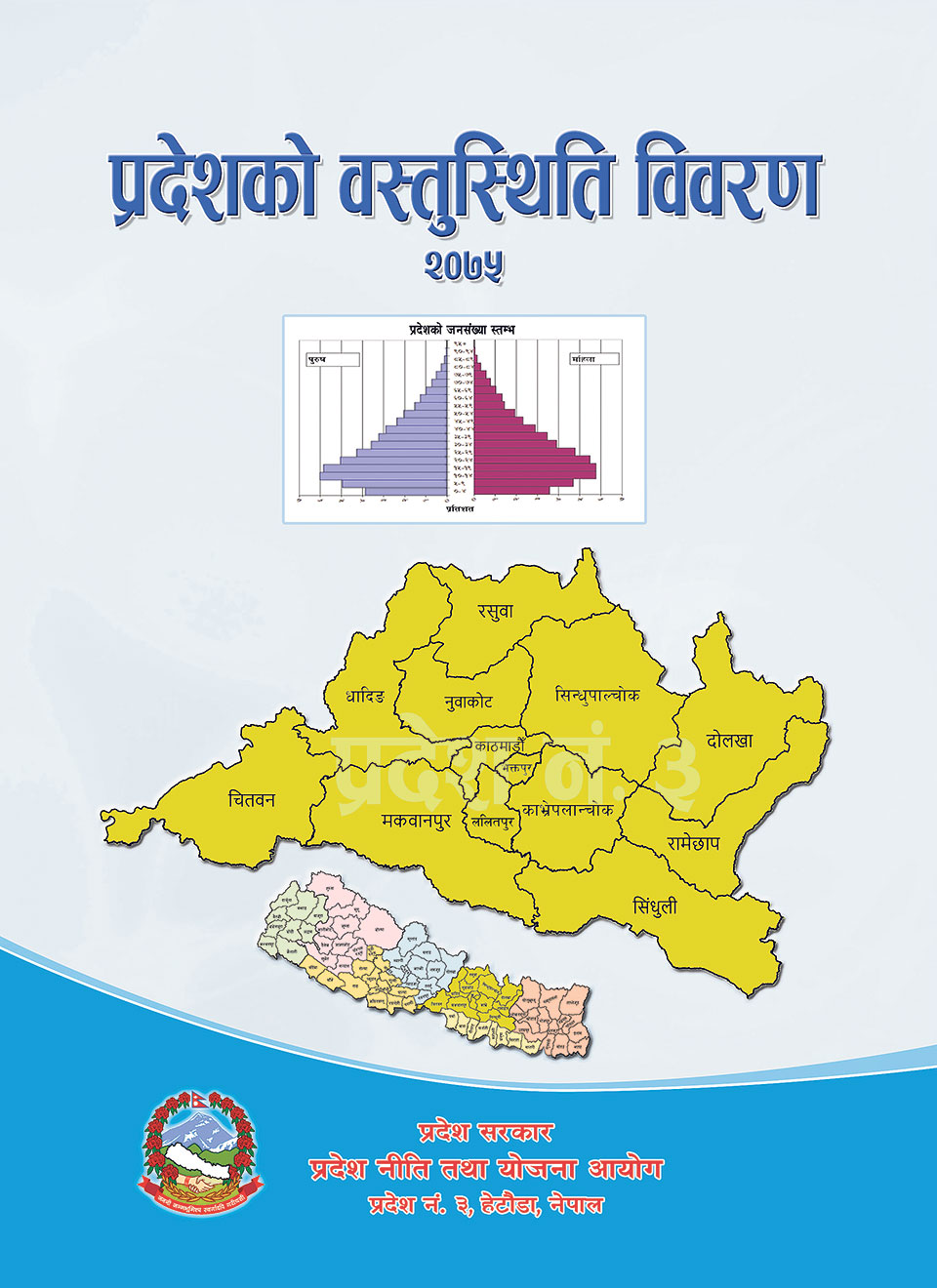
OR
status paper of province 3
Province 3 facing 400,000 tons in food deficit
Published On: August 9, 2018 08:38 AM NPT By: Republica | @RepublicaNepal

KATHMANDU, Aug 9: Province 3 has one of the highest populations (20 percent) in the country, but its agro production is insufficient to feed its citizens, shows a status report prepared by Provincial National Planning Commission.
According to the report, the province is facing food deficit of 389,961 tons as its produces only 852,680 tons every year while demand stands at 1,242,618 tons.
The paper says that this is not a positive indicator in a perspective of food and nutrition security.
Nearly half of the population in this province is engaged in agriculture profession, according to the report. Despite this, total production is insufficient to meet the demand for food as large swathes of arable land in the province do not have irrigation facility.
Only 34.72 percent of 113,973 hectares of total arable land in the province has irrigation facility.
Vice-chairman of the Province Policy and Planning Commission Khima Lal Devkota said that provincial governments will have to focus on producing more crops to make the province self-sufficient in agro products. “We will put development of infrastructures, like irrigation projects, high in priority to increase agro production in the province,” said Devkota.
The federal government has set a plan to become self-sufficient in agro products by 2019 and doubling agro products by 2023.
Despite low agro production, Province 3 is ahead of other provinces in egg production. The province produces 54 percent of country’s total egg production, or 720 million units. Similarly, it produces 357,938 tons of milk which is 18.7 percent of the country’s total production.
The status paper also reads that the province has competitive advantage over other provinces in maize, wheat, barley, mustard, coffee, cardamom and onion among other farm products.
CHALLENGES GALORE IN INFRASTRUCTURE
The status paper also states that the province is finding it challenging to meet infrastructure need of the growing urban population. According to the report, 72.57 percent of the population of 5,529,452 living in the province resides in urban areas. “There is a need to manage residential areas, education infrastructures, health and drinking water facilities as well as sewage lines for this population,” the paper reads.
The report further states that 17.2 percent of the families in the province still lack toilets, while 9 percent of the households do not have drinking water supply. The commission said that it is a challenging task to provide drinking water facility to all the households.
Though the province is a home to several health institutions and even medical colleges, data shows that there is still lot more to do lower child and infant mortality rate. According to the report, infant mortality rate in the province stands at 17 (per 1,000 births).
“This is surprising given the facilities available at the province. We need to look into the matter seriously,” said Devkota.
Province 3 is the first province in the country to unveil its status report.
BOY-GIRL RATIO HIGHEST IN BHAKTAPUR, LALITPUR
Bhaktapur and Lalitpur districts have the highest boy-girl ratio in Province 3 below five years age group.
According to the report, Bhaktapur has the highest boy-girl ratio of 1.15. This means 115.53 boys per 100 girls born. Such ration for Lalitpur is 1.14.
The average boy-girl ratio in the province is 1.08.
The status report says that high boy-girl ratio is due to the growing trend of sex-selective birth. “This is a serious social evil affecting the coming generation. Needful actions should be taken to protect the life of girl child,” reads an excerpt of report.
Devkota called for immediate action by the provincial government to save girl child. “The provincial government will bring programs for addressing the problem in the upcoming policies and programs,” he committed.
You May Like This

NRB introduces cautiously flexible measures to address ongoing slowdown in various economic sectors
KATHMANDU, July 26: Nepal Rastra Bank (NRB) has taken cautiously flexible measures to facilitate cash flow in certain sectors including... Read More...

NRB to provide collateral-free loans to foreign employment seekers
KATHMANDU, July 26: Nepal Rastra Bank (NRB) through its monetary policy for the current fiscal year 2024/25 has introduced a... Read More...

NRB to review microfinance loan interest rate
KATHMANDU, July 26: The Nepal Rastra Bank (NRB) has decided to review the interest rate for loans to be issued... Read More...










Just In
- Heavy rainfall likely in Bagmati and Sudurpaschim provinces
- Bangladesh protest leaders taken from hospital by police
- Challenges Confronting the New Coalition
- NRB introduces cautiously flexible measures to address ongoing slowdown in various economic sectors
- Forced Covid-19 cremations: is it too late for redemption?
- NRB to provide collateral-free loans to foreign employment seekers
- NEB to publish Grade 12 results next week
- Body handover begins; Relatives remain dissatisfied with insurance, compensation amount







Leave A Comment